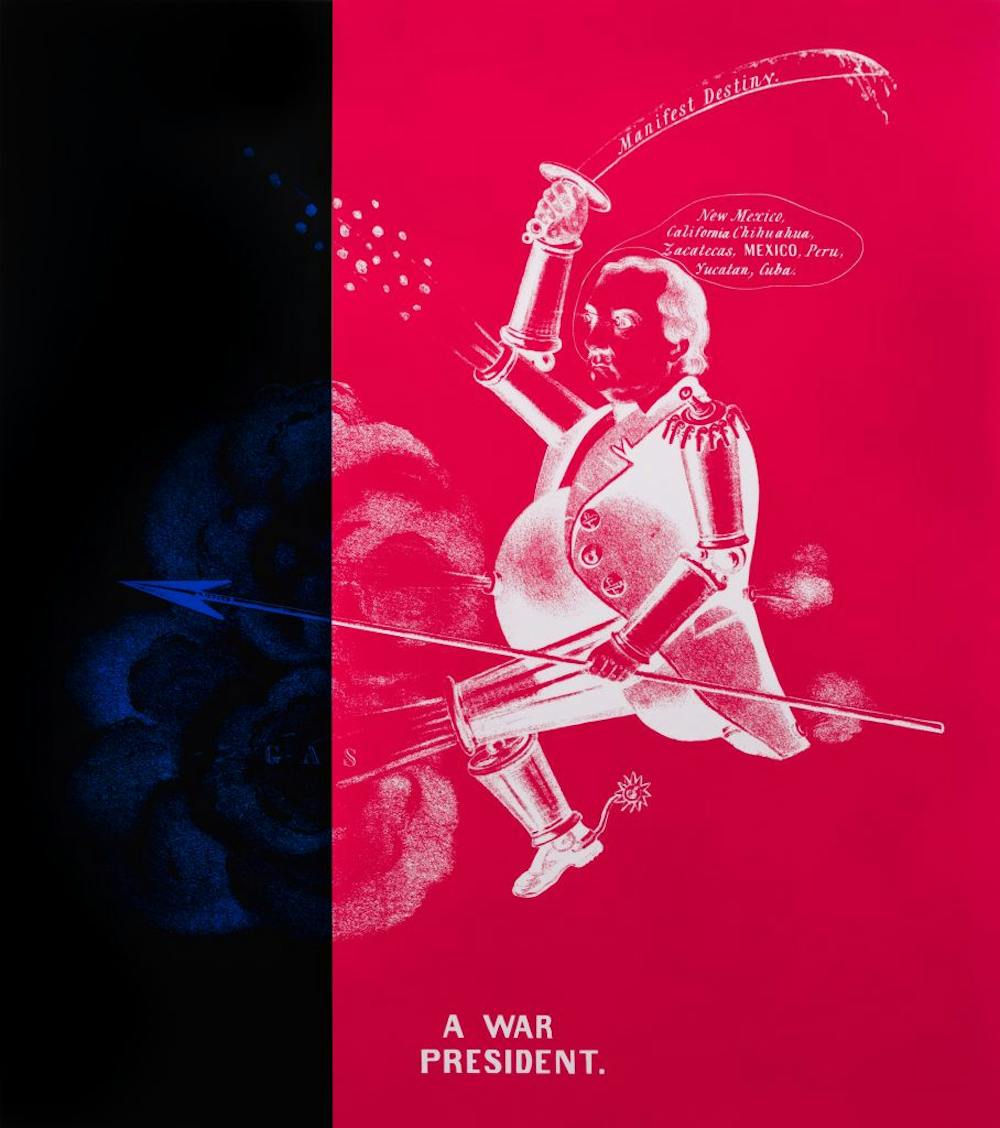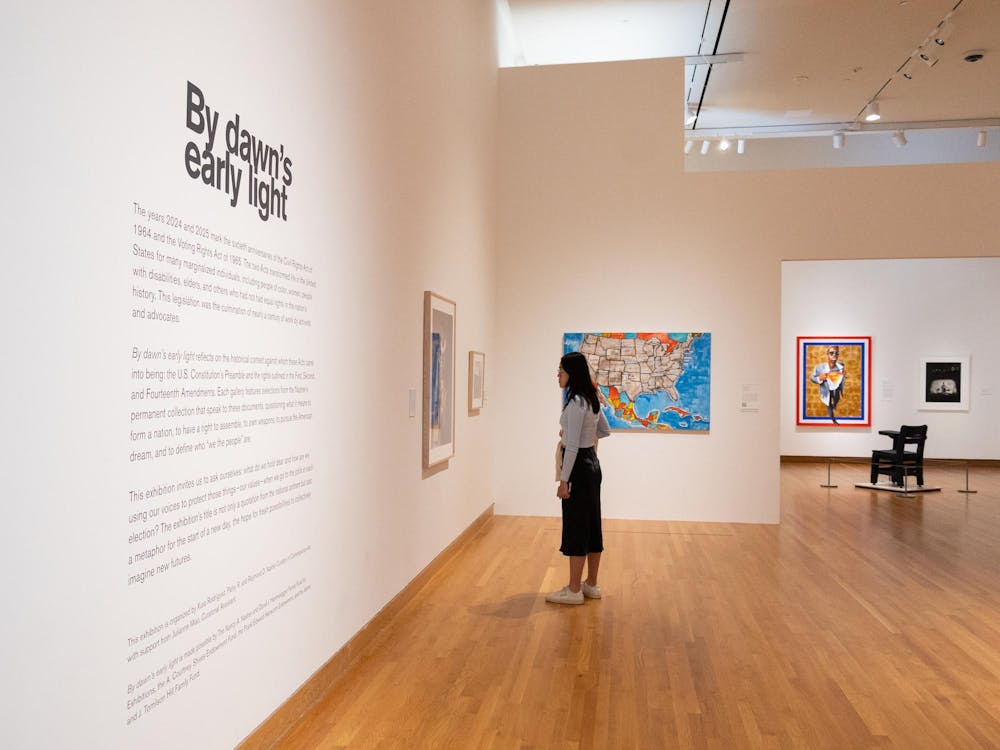By this point in the school year, any student who has wanted to has likely made the brief trek to the Nasher Museum of Art. What they’ve seen is generally a mix of visiting exhibits and a small slice of the museum’s roughly 13,000-piece collection. In the Janine and J. Tomilson Hill Gallery is “By Dawn’s Early Light,” a yearlong exhibit that uses the Nasher’s vast collection to celebrate the 60th anniversaries of the Voting Rights Act of 1964 and Civil Rights Act of 1965.
The exhibit refocuses attendees' reflections on these dual anniversaries towards the four key pieces of American legal history: the Preamble, the First Amendment, the Second Amendment and the Fourteenth Amendment. By combining a focus on our nation’s fundamental commitments with a look at our continued failure to fulfill them, the exhibit hopes to make viewers think about the meaning of such core concepts as nationhood, statecraft, the American Dream and Constitutional rights.
The gallery’s hope behind this introspection isn’t just to make the viewers think, however. It also seeks to encourage us to take action to bring about a better future.
Upon entering the exhibit, one immediately sees a quote on the wall about the founders’ bold declaration that they seek “To Form a More Perfect Union,” surrounded by art examining the US pre-founding. The pieces go beyond the country, too, drawing on artists from across the Americas to explore the continent’s legacy of colonialism, oppression and colorism.
A particularly interesting piece is an early model electric car in the room’s center, titled “Supradigm,” topped with a stack of United Fruit Company sugar bags, bringing to mind the fact that American companies engaged in neocolonialism well into the 1900s. Several of the exhibition’s pieces fuse cultures and styles, in a commentary on how colonialism and slavery forcibly merged influences and ripped people away from their native cultures.
Past the center room are a number of smaller sections, each exploring a different question prompted by a specific amendment or clause. In one section, viewers focus on the meaning of “We The People” and how a now multiracial America once tried to limit the American identity to white men. Through photos and artwork, viewers are exposed to a small slice of the diverse American identity and experience, seeing immigrants and native-born Americans, people of all races and people from all walks of life.
The next section forces the audience to think about the historical inadequacies of the Fourteenth Amendment, which promised an “equal protection of the laws” that was denied to so many for so long. Through photos and artwork from the Civil Rights movement and other events, the audience sees America’s complicated recent history. A piece that stands out is “Ain’t Gonna Let Nobody Turn Us Around,” which superimposes photos of protest and oppression on mirrors, pulling the viewers into the events they observe.
In another section, the audience is encouraged to ponder the Second Amendment and the right to bear arms. The art here focuses on gun culture and its negative repercussions, as well as the experiences of those who’ve lost loved ones to gun violence.
Next to the Second Amendment is a section focusing on the First Amendment. Here, the central issue is the regular denial of people of color’s right to assemble, as shown through the inclusion of photos and artwork from the Civil Rights Movement.
One art piece that stood in the exhibit overall was “Trinity for President.” A spin on an old Lewis Cass 1848 presidential campaign poster, the piece plays with the colors and hides a costume of Trinity, a character from “The Matrix” film franchise, in the back. The piece comments on layers of oppression, history and meaning in modern society and stands out because of its style and delivery.

The exhibit itself draws on the work of a diverse group of approximately 40 artists and was put together by Xuxa Rodríguez, the Patsy R. and Raymond D. Nasher Curator of Contemporary Art, with help from Curatorial Assistant Julianne Miao.
Overall, the exhibit was enjoyable and successfully drew attention to the intersection of art, history and politics. The pieces were interesting and varied without conflicting, and they showcased the treasure trove of artistic talent the Nasher has at its disposal. The overall message of the exhibit remained largely apolitical while still encouraging people to think about American history amid one of the most contentious elections in recent memory.
Get The Chronicle straight to your inbox
Sign up for our weekly newsletter. Cancel at any time.
Zev van Zanten is a Trinity junior and recess editor of The Chronicle's 120th volume.

